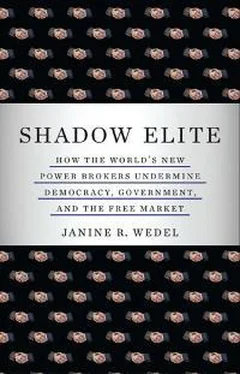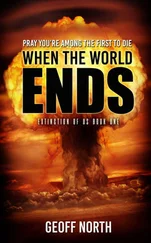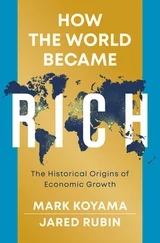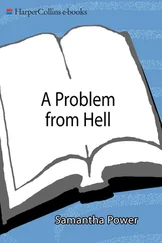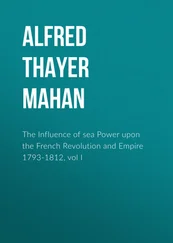Overlap between government advisory boards and companies that do business in the same arenas is hardly unusual. Ten current or previous members of the influential Defense Policy Board (since 1997) and twenty-five members of the authoritative Defense Science Board serve or served as an executive, board member, consultant, or lobbyist for one of the top twenty government contractors. The story of Richard Perle, privy to classified information as a member of the Defense Policy Board, is a case in point. His chairmanship of (and later membership on) the Defense Policy Board was one of many roles he occupied during the run-up to the Iraq war. While his tenure on the board ended following a conflict-of-interest controversy entailing his concurrent role as consultant for a defense contractor, his board position helped him wield policy influence at a crucial moment. In a “coincidence” of (his) interests, he used the information, access, and stature afforded him by the board to agitate for policies long pushed by his group. 62
Such coincidences abound. While serving on a government advisory board, a member who also works for a contractor may use information to which he has access for his own and the contractor’s advantage (a possible conflict of interest), but may also merge the agenda of the government and the contractor in a coincidence of interests, by, say, recommending the same program or need to both entities. While supposedly acting on behalf of the public, he can instead help craft “public” policies to benefit himself or his group.
The role of task forces in making public policy also has raised controversy—and legal questions. When federal task forces involve private citizens as members (as opposed to being composed exclusively of federal employees), the task forces are subject by law to the Federal Advisory Committee Act. Two task forces in particular have received much scrutiny in recent years from public interest watchdogs and congressional and public critics. Some of these bodies’ members and dealings are steeped in might-be-private, might-be-public ambiguity. 63
President Clinton’s Task Force on National Health Reform, to which he appointed First Lady Hillary Rodham Clinton as chair, is famous among them. While the task force’s recommendations and the role of a policy-involved first lady were touchy, of interest here is the nebulous status of the group. The standing of the first lady herself in this unusual role was particularly contentious. She was appointed by the president to the post but was she, or was she not, a “government official”? If not, and were she merely a private citizen, then the task force would be subject to FACA, meaning its proceedings generally would have to be open to the public and minutes made available to interested parties. The controversy surrounding the task force set off litigation. Although the U.S. Court of Appeals for the D.C. Circuit eventually rendered the Clinton task force not subject to FACA, it was widely criticized for operating behind closed doors, and under public pressure the White House complied with a GAO investigation. 64
The Bush II White House was even less forthcoming when it came to Vice President Dick Cheney’s energy task force, officially the National Energy Policy Development Group. Bush appointed Cheney to chair the group within weeks of taking office, and many observers understood it to be developing a national energy policy. However, Cheney’s office never did turn over its records for public scrutiny. The informal consultations that the vice president and relevant officials and staff held with energy industry representatives prompted investigations by the GAO, in addition to legal challenges from the Sierra Club and Judicial Watch. The GAO found that the task force personnel had “met with, solicited input from, or received information and advice from nonfederal energy stakeholders, principally, petroleum, coal, nuclear, natural gas, and electricity industry representatives and lobbyists.” GAO head David Walker told one interviewer that the GAO’s inability to obtain the task force documents raised the issue of “a reasonable degree of transparency and an appropriate degree of accountability in government.” He said it was the first case since 1998, when he assumed his position, that the GAO was kept from doing its job and putting out a report worthy of government auditing standards. Ultimately, a 2004 Supreme Court ruling concurred with Cheney’s office that the task force’s deliberations need not be released to the public. 65
The way that Cheney’s office handled the disclosure—or nondisclosure—of events and people connected to the task force fits in with the trend toward personalization, networking, and behind-the-scenes transactions. Cheney informalized the policy process and kept records from the eyes of the public and government and legal investigators, and got away with it. The usual channels to force transparency, including congressionally ordered investigations and the courts, proved impotent. At one point in a fit of flex-like bravado, Cheney tried to have his cake and eat it too. After claiming executive privilege, he provoked derision from many quarters, in 2007, when he asserted that his office was not an “entity within the executive branch.” 66
Public policy institutions are more often partisan than neutral. Think tanks, for example, which sometimes carry out government projects but more often are simply engines of influence, once enjoyed a greater reputation for scholarly distance from politics. Think-tankers often present themselves as public intellectuals. Some of them indeed are. (The New America Foundation, with which I have been affiliated as a fellow while writing this book, conducts programs known for creating policy proposals not predictable or easily pegged in terms of left or right, Democratic or Republican.) Part of the usefulness of think tanks, from the point of view of their affiliates, is that they provide a veneer of neutrality and objective study. But this may be more public relations than reality. An authoritative survey of trends in American think tanks documents “an increase in partisan politics, from which a corresponding rise in partisan organizations and institutions that produce analysis along partisan lines has been identified.” (This trend recalls many of the “think tanks,” foundations, and NGOs of the 1990s’ transitional central and eastern Europe that acted as [unregistered] political parties or simply personal springboards for their founders.)
While purporting to be scholarly and disinterested, think tanks can issue findings that are either ideologically based or crafted to serve the ends of specific companies or industries. A think tank funded by energy concerns can create confusion over the facts surrounding climate change for the benefit of the industry. Those funded by the defense industry can likewise cloud the issues. Meanwhile, they can smooth the passage of policy ideas from industry to public discourse or legislation, or they can quash attempts to change more objectively derived policies. Think-tankers can pose as objective analysts for a public that is often unaware of sponsors’ vested interests. The press, sometimes equally uninformed, quotes these “experts” without disclosing when the think tanks are bankrolled by companies whose profits are crucially linked to the views offered by the experts. The environment of truthiness, which allows people to play with how they present themselves to the world regardless of fact or track record, can keep critical questions at bay. The survey of think-tank trends concluded that: “the omnipresent media with its focus on sound bites rather than sound analysis is driving think tanks to respond to its time and content parameters by producing quick, pithy analysis that is quotable and accessible.” These trends and others, the author writes, “combine to pose great challenges for the sustainability of think tanks as independent, reliable providers of sound public policy advice in the future.” 67
Читать дальше
